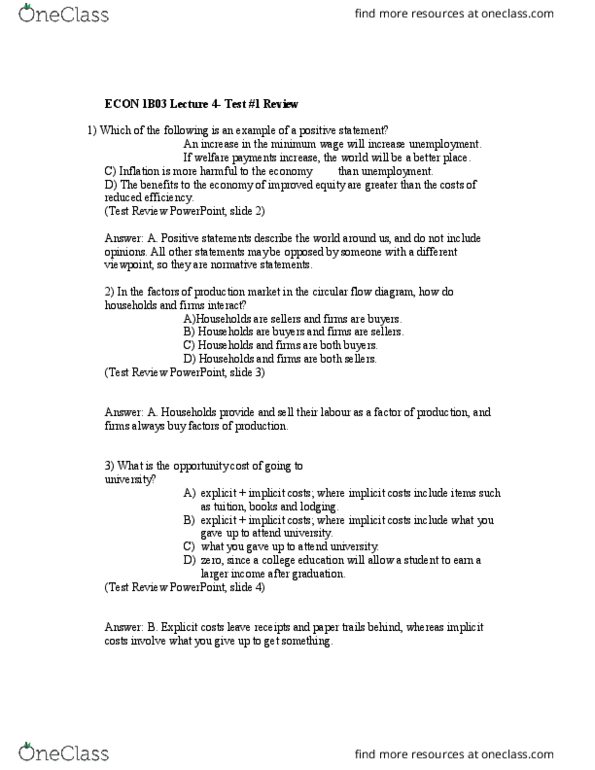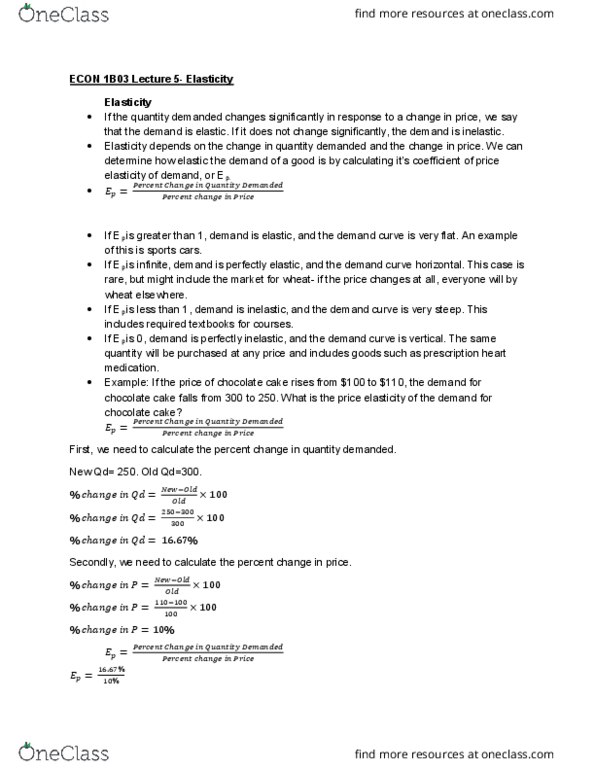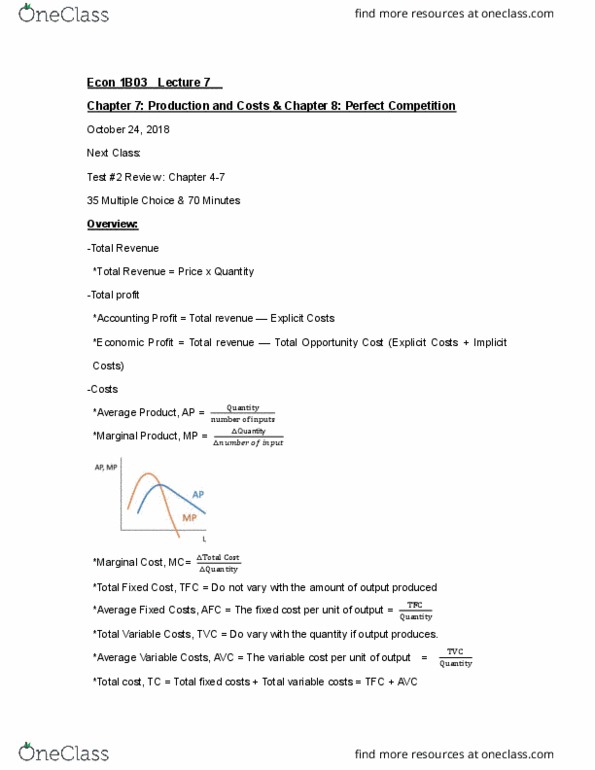ECON 1B03 Lecture Notes - Lecture 5: Chocolate Cake, Demand Curve, Normal Good
ECON 1B03 verified notes
5/13View all
Document Summary
If the quantity demanded changes significantly in response to a change in price, we say that the demand is elastic. If it does not change significantly, the demand is inelastic: elasticity depends on the change in quantity demanded and the change in price. We can determine how elastic the demand of a good is by calculating it"s coefficient of price elasticity of demand, or ep: (cid:3043)= (cid:3017)(cid:3032)(cid:3045)(cid:3030)(cid:3032)(cid:3041)(cid:3047) (cid:3004) (cid:3028)(cid:3041)(cid:3034)(cid:3032) (cid:3041) (cid:3018)(cid:3048)(cid:3028)(cid:3041)(cid:3047)(cid:3047) (cid:3005)(cid:3032)(cid:3040)(cid:3028)(cid:3041)(cid:3031)(cid:3032)(cid:3031) (cid:3017)(cid:3032)(cid:3045)(cid:3030)(cid:3032)(cid:3041)(cid:3047) (cid:3030) (cid:3028)(cid:3041)(cid:3034)(cid:3032) (cid:3041) (cid:3017)(cid:3045)(cid:3030)(cid:3032) If ep is greater than 1, demand is elastic, and the demand curve is very flat. If ep is infinite, demand is perfectly elastic, and the demand curve horizontal. This case is rare, but might include the market for wheat- if the price changes at all, everyone will by wheat elsewhere. If ep is less than 1, demand is inelastic, and the demand curve is very steep. If ep is 0, demand is perfectly inelastic, and the demand curve is vertical.






